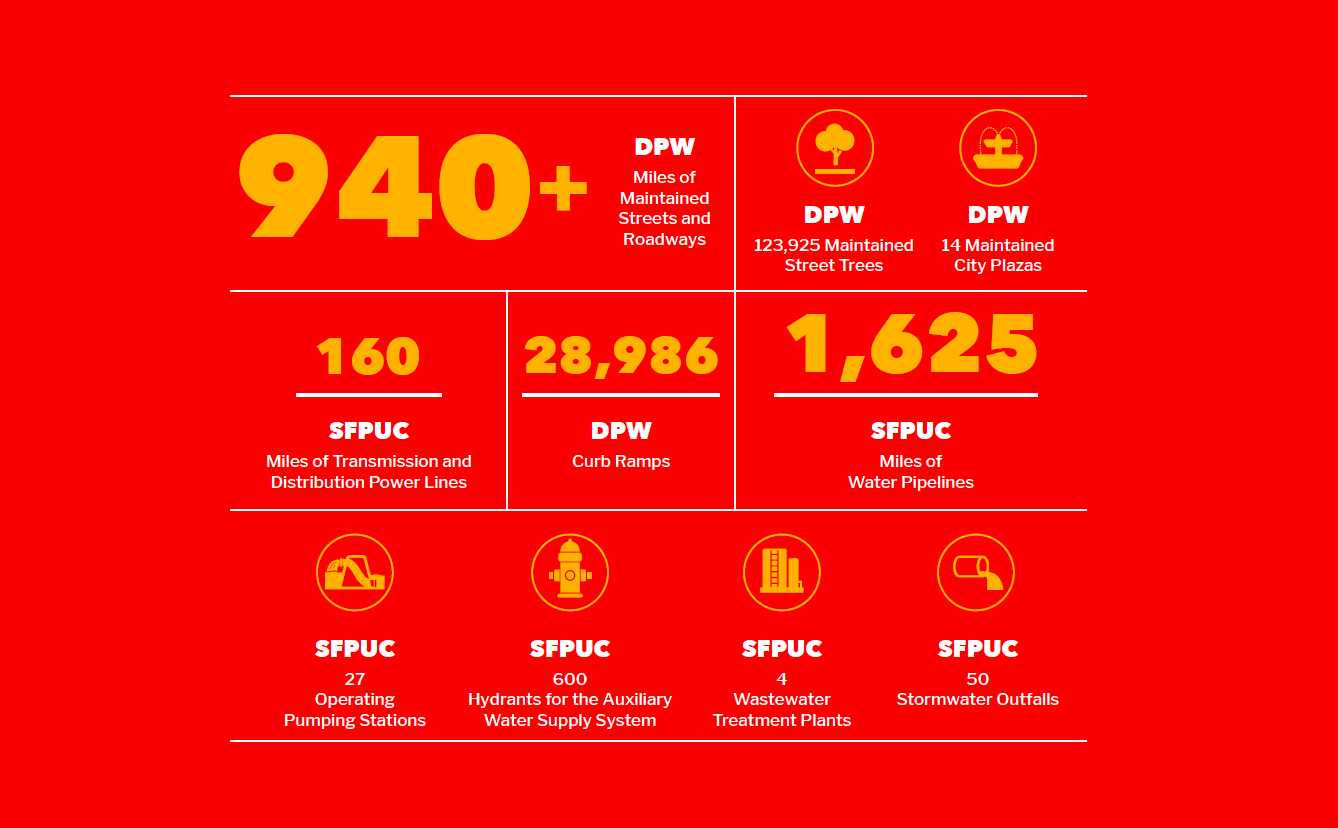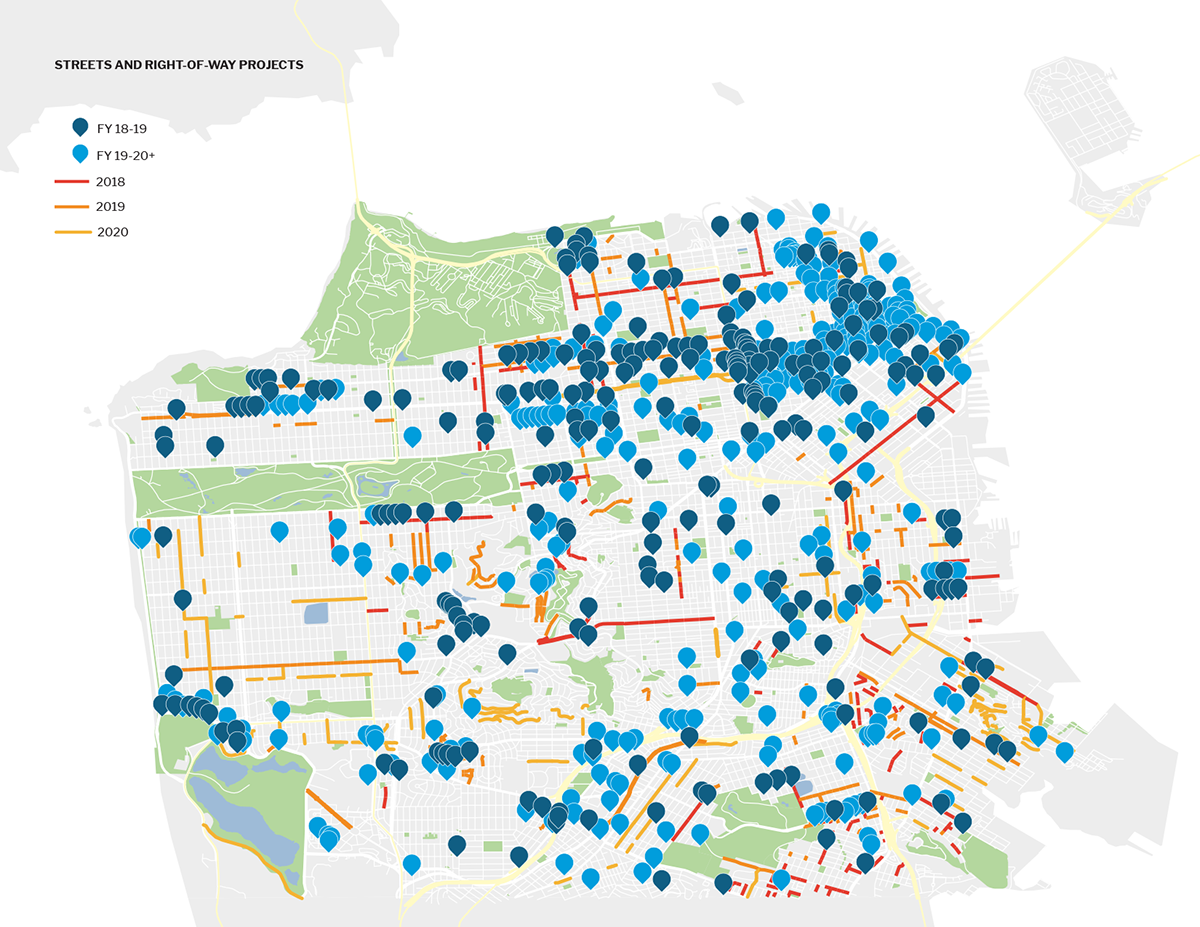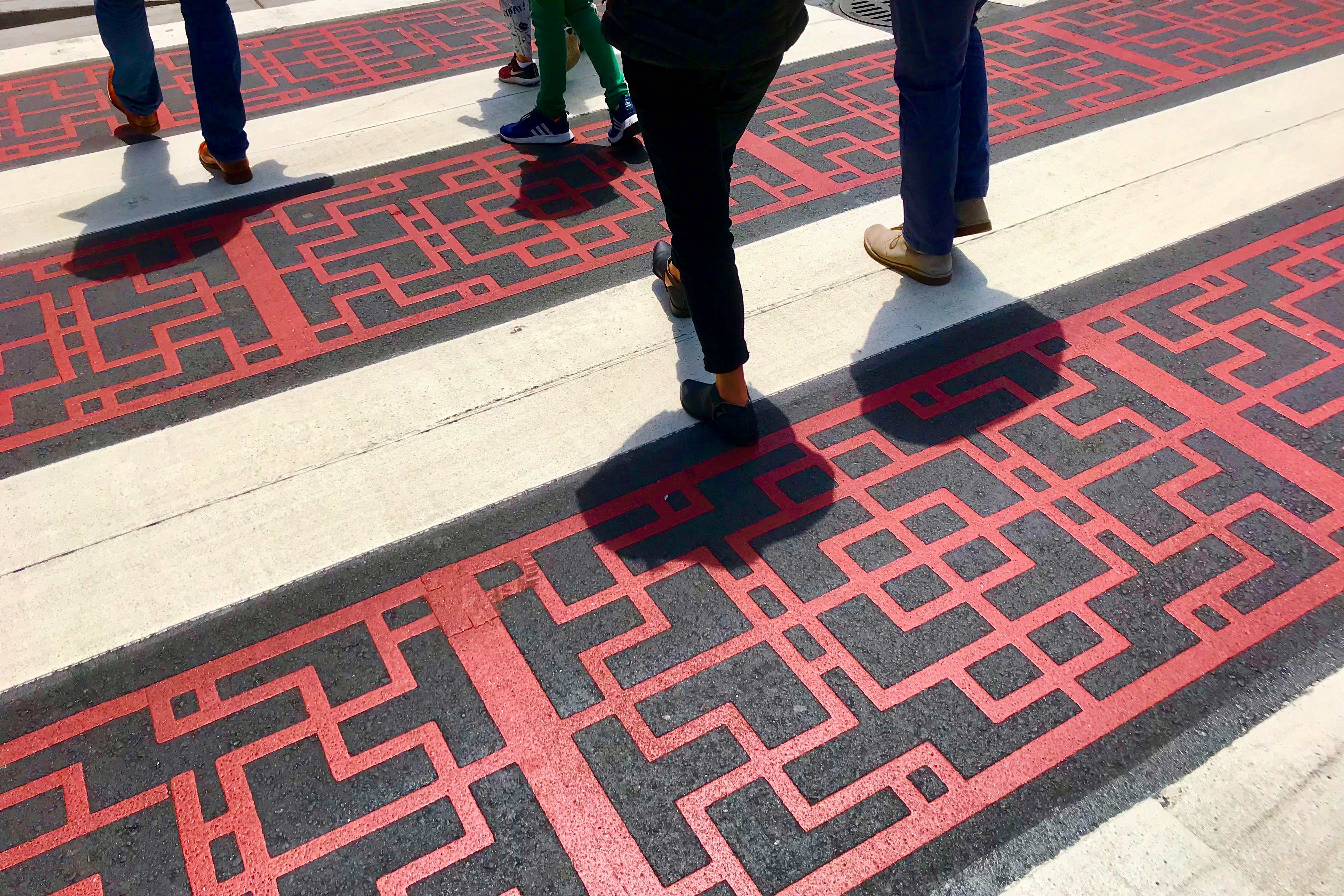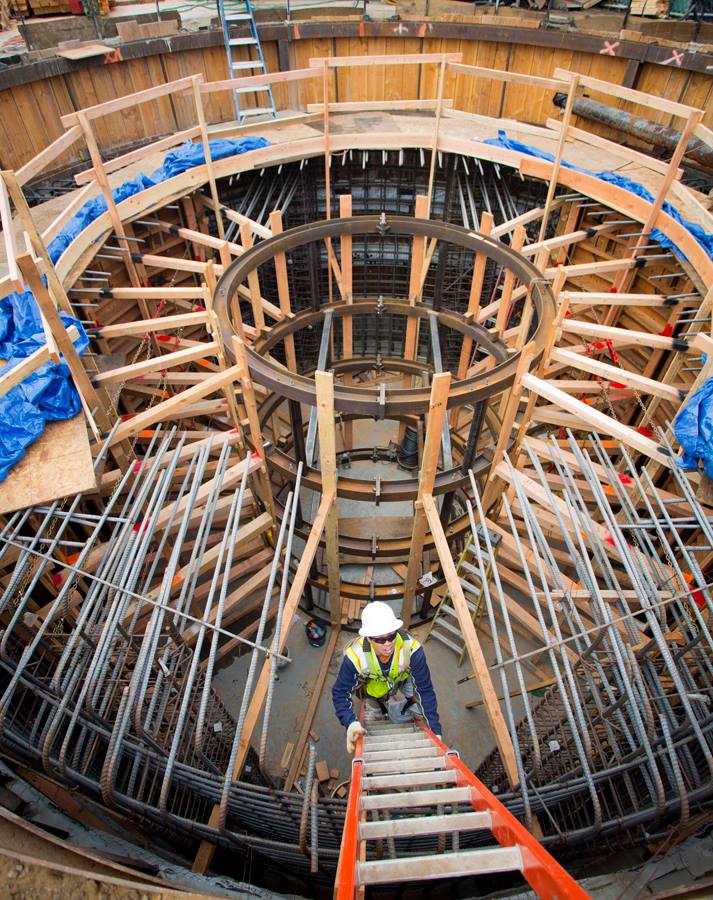SFPUC: San Francisco Public Utilities Commission
The backbone of San Francisco is our horizontal infrastructure; the streets, water, power, and sewer systems that make living in a city possible. Many of these projects function outside of the visibility of many residents. They run underground, are walked over, and are turned on with the flick of a switch or turn of a faucet. Many of the infrastructure systems that the City invests in provide not only basic services, but contribute to City-wide goals of environmental sustainability, pedestrian safety, and a more beautiful and livable City.
It is imperative that the City maintain these assets in a state of good repair given the essential nature of these systems. Proactive maintenance not only ensures the steady provision of services, but is less costly than fixing problems that have degraded beyond repair.


Programs addressed in this chapter are delivered by the San Francisco Public Works and the San Francisco Public Utilities Commission. Among the key programs implemented by Public Works are Street Resurfacing, Sidewalk Repair, and Street Tree Planting. SFPUC provides San Francisco with water, power, and wastewater systems, with multi-billion dollar programs designed to prolong the life of these assets. Together, these two agencies provide tangible results that affect the lives of each and every San Franciscan.
Public Works Streets and Rights-of-Way
The City has been able to make significant improvements when combining proceeds from the Road Repaving and Street Safety 2011 Bond Program with existing revenue sources for streets and right-of-way. The third and final bond sale was completed in the spring of 2016, rounding out the $248 million program dedicated to street resurfacing, streetscape, and traffic signal upgrade projects.
In order to continue to improve streets and public right-of-way assets, the Plan recommends pursuit of dedicated long-term funding sources for street resurfacing as the General Fund lacks capacity to fully meet these needs.
Since the last Capital Plan, the City has committed to Vision Zero with a goal of zero traffic fatalities and critical injuries in San Francisco by 2024. San Francisco’s expenditures in streets and right-of-way infrastructure improve safety in myriad ways. Roadway repaving creates a smoother surface and renews street and crosswalk markings, which improves the safety of drivers, bicyclists, and people in crosswalks. Additionally, the City continues to reaffirm our commitment to safe and accessible paths of travel for people with disabilities by making capital improvements to curb ramps, sidewalks, street crossings, and roadways across the City.

Public Utilities Commission
The San Francisco Public Utilities Commission (SFPUC) provides and distributes water to 2.6 million customers, treats wastewater, and supplies electric power to operate Muni streetcars and electric buses, street and traffic lights, and municipal buildings. The SFPUC includes three utility enterprises: Water, Wastewater, and Power.
The Water Enterprise consists of over 389 miles of pipeline, over 74 miles of tunnels, 11 reservoirs, five pump stations, and three water treatment plants located outside of the City (the “Regional Water System”) and over 1,235 miles of pipeline, 11 reservoirs, eight storage tanks, 22 pump stations, eight hydropneumatic stations and 17 chlorination stations located within the city limit of the City (the “In-City Distribution System”).
The Water Enterprise is responsible for the distribution of high quality water to its customer in San Francisco and other Bay Area communities. Hetch Hetchy wastershed, located in Yosemite National Park, provides approximately 85% of San Francisco’s total water needs, with the remaining 15% produced by the Alameda and Peninsula watersheds. The drinking water provided is among the purest in the world; the system for delivering that water is almost entirely gravity fed, requiring almost no fossil fuel consumption to move water from the mountains to your tap. Hetchy Water operates, maintains, and improves water and power facilities, smaller dams and reservoirs, water transmission systems, power generation facilities, and power transmission assets.
The Wastewater Enterprise operates and maintains the City's water pollution control plants, pumping stations, and collection system in order to protect public health and the environment. The Wastewater Enterprise maintains the 900-mile long combined sewer system and 27 pump stations that collect sewage and storm water, moving wastewater to treatment plants for eventual discharge into the San Francisco Bay and the Pacific Ocean. The SFPUC is undertaking a Sewer System Improvement Program (SSIP) to modernize its systems and help meet its Levels of Service goals. The SSIP is expected to take place over the next 20 years.
The Power Enterprise is responsible for providing reliable, clean, high-quality electric energy to the City. The Power Enterprise’s 100% GHG-free electric supply portfolio consists of hydroelectric power from three power plants in the Sierra Nevada mountains, solar power generated at SFPUC and other City facilities, and bio-methane power produced at SFPUC wastewater treatment facilities.


